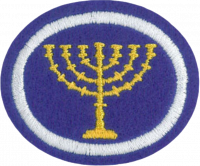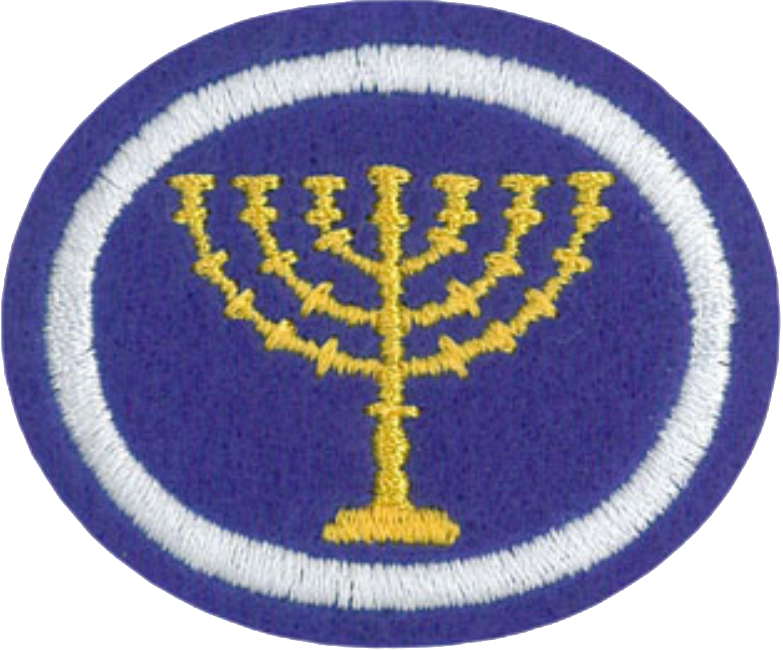Difference between revisions of "AY Honors/Sanctuary/Answer Key 2/es"
(Created page with "Especialidades JA/Santuario/Respuestas") |
(Created page with "Nota: Esta escala se puede utilizar para desarrollar su modelo tridimensional en requisitos posteriores.") |
||
| Line 3: | Line 3: | ||
<section begin="Body" /> | <section begin="Body" /> | ||
{{ansreq|page={{#titleparts:{{PAGENAME}}|2|1}}|num=1}} | {{ansreq|page={{#titleparts:{{PAGENAME}}|2|1}}|num=1}} | ||
| − | <noinclude> | + | <noinclude></noinclude> |
| − | </noinclude> | + | <!-- 1. Explorar las partes del santuario descritas en Éxodo 25-40: --> |
| − | <!-- 1. | ||
| − | |||
| − | + | Herramienta sugerida para esta especialidad: un libro de composición simple, un cuaderno de espiral o un «diario» equivalente será una gran ventaja para desarrollar esta especialidad. Asegúrese de que cada entrada esté claramente titulada para que pueda regresar y hacer referencia a cada entrada más adelante en la experiencia. El mismo diario podría usarse si continúa al nivel avanzado. | |
| − | |||
| − | |||
| − | + | <noinclude></noinclude> | |
| − | <noinclude | ||
| − | |||
{{ansreq|page={{#titleparts:{{PAGENAME}}|2|1}}|num=1a}} <!--T:6--> | {{ansreq|page={{#titleparts:{{PAGENAME}}|2|1}}|num=1a}} <!--T:6--> | ||
| − | <noinclude> | + | <noinclude></noinclude> |
| − | </noinclude> | + | Atrio, lugar santo, lugar santísimo |
| − | |||
| − | |||
| − | + | <noinclude></noinclude> | |
| − | <noinclude | ||
| − | |||
{{CloseReq}} <!-- 1a --> | {{CloseReq}} <!-- 1a --> | ||
{{ansreq|page={{#titleparts:{{PAGENAME}}|2|1}}|num=1b}} <!--T:7--> | {{ansreq|page={{#titleparts:{{PAGENAME}}|2|1}}|num=1b}} <!--T:7--> | ||
| − | <noinclude> | + | <noinclude></noinclude> |
| − | </noinclude | ||
| − | |||
| − | |||
| − | |||
| − | |||
| − | + | <noinclude></noinclude> | |
| − | <noinclude | ||
| − | |||
{{CloseReq}} <!-- 1b --> | {{CloseReq}} <!-- 1b --> | ||
{{ansreq|page={{#titleparts:{{PAGENAME}}|2|1}}|num=1c}} <!--T:8--> | {{ansreq|page={{#titleparts:{{PAGENAME}}|2|1}}|num=1c}} <!--T:8--> | ||
| − | <noinclude> | + | <noinclude></noinclude> |
| − | </noinclude | ||
| − | |||
| − | + | <noinclude></noinclude> | |
| − | <noinclude | ||
| − | |||
{{CloseReq}} <!-- 1c --> | {{CloseReq}} <!-- 1c --> | ||
{{ansreq|page={{#titleparts:{{PAGENAME}}|2|1}}|num=1d}} <!--T:9--> | {{ansreq|page={{#titleparts:{{PAGENAME}}|2|1}}|num=1d}} <!--T:9--> | ||
| − | <noinclude> | + | <noinclude></noinclude> |
| − | </noinclude | ||
| − | |||
| − | + | <noinclude></noinclude> | |
| − | <noinclude | ||
| − | |||
{{CloseReq}} <!-- 1d --> | {{CloseReq}} <!-- 1d --> | ||
{{CloseReq}} <!-- 1 --> | {{CloseReq}} <!-- 1 --> | ||
{{ansreq|page={{#titleparts:{{PAGENAME}}|2|1}}|num=2}} | {{ansreq|page={{#titleparts:{{PAGENAME}}|2|1}}|num=2}} | ||
| − | <noinclude> | + | <noinclude></noinclude> |
| − | </noinclude> | + | <!-- 2. Dibujar un modelo a escala del santuario en una hoja de papel de 11 x 17 (A4), el atrio y la posición de todo el mobiliario (no olvidar de añadir las direcciones cardinales). --> |
| − | <!-- 2. | ||
| − | |||
| − | + | Nota: Esta escala se puede utilizar para desarrollar su modelo tridimensional en requisitos posteriores. | |
| − | |||
| − | |||
| − | + | <noinclude></noinclude> | |
| − | <noinclude | ||
| − | |||
{{CloseReq}} <!-- 2 --> | {{CloseReq}} <!-- 2 --> | ||
{{ansreq|page={{#titleparts:{{PAGENAME}}|2|1}}|num=3}} | {{ansreq|page={{#titleparts:{{PAGENAME}}|2|1}}|num=3}} | ||
Revision as of 02:30, 1 April 2021
Nivel de destreza
2
Año
2004
Version
24.12.2025
Autoridad de aprobación
División Norteamericana
1
Herramienta sugerida para esta especialidad: un libro de composición simple, un cuaderno de espiral o un «diario» equivalente será una gran ventaja para desarrollar esta especialidad. Asegúrese de que cada entrada esté claramente titulada para que pueda regresar y hacer referencia a cada entrada más adelante en la experiencia. El mismo diario podría usarse si continúa al nivel avanzado.
1a
Atrio, lugar santo, lugar santísimo
1b
1c
1d
2
Nota: Esta escala se puede utilizar para desarrollar su modelo tridimensional en requisitos posteriores.
3
NOTE: Pathfinders write down on sticky notes, journal page, or shout out what they SEE when they first look at the image, what they THINK about when they see the image, and what the WONDER about God’s purpose or role for this furnishing. If they write down their observations, then share them with a partner, most will have the chance to meaningfully participate rather than simply having the "smart religious kids" do all the interacting.
3a
3b
3c
3d
3e
3f
3g
3h
4
- a. Rojo
- b. Azul
- c. Púrpura
- d. Blanco
- e. Negro
- f. Oro
- g. Plata
- h. Bronce
4a
4b
4c
5
5a
5b
5c
5d
6
6a
6b
7
7a
7b
7c
8
8a
8b
8c
8d
9
10
10a
10b
Butcher paper posted on the walls, each with one of the parts of the sanctuary or furnishing. The Pathfinders spend 10-15 minutes writing what they know about as many items in the above list as possible. When done, the collective knowledge can be discussed, and the teacher can fill in any "gaps" in understanding.


